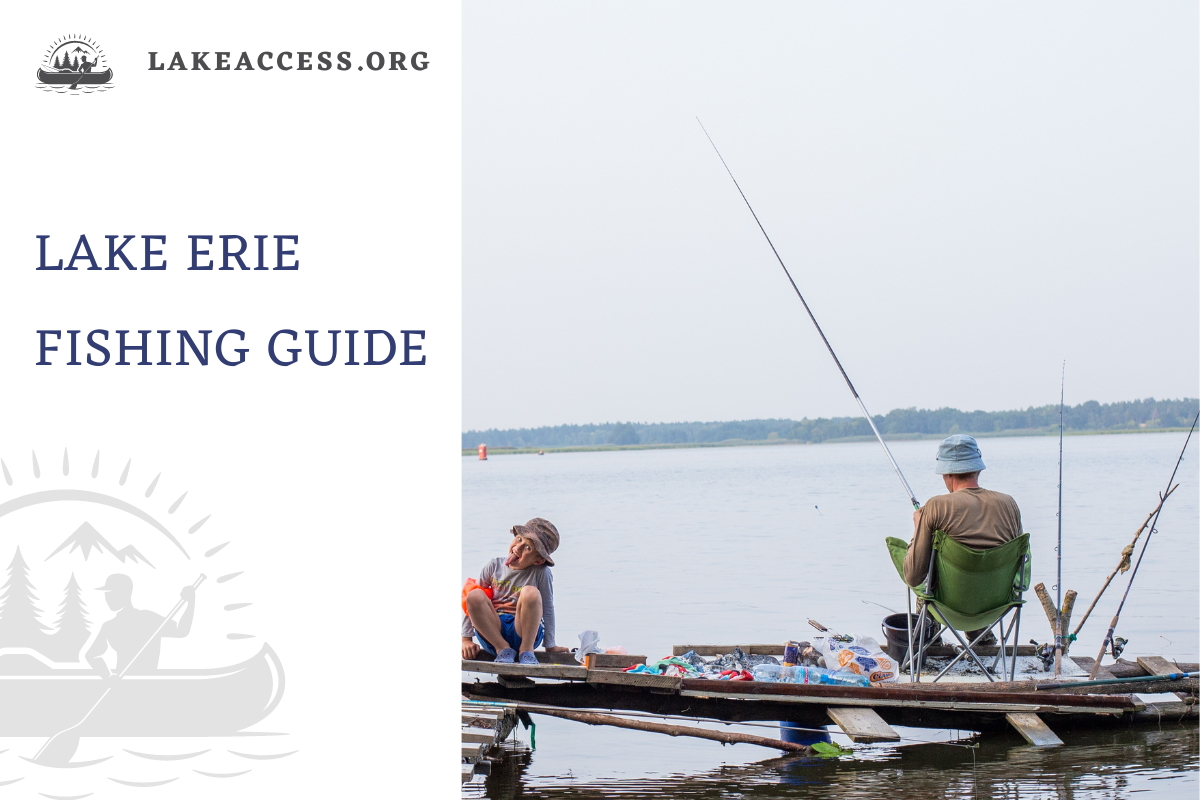Lake Erie is known as one of the best freshwater fisheries in North America, attracting anglers from around the world. With a variety of fish species and ample fishing opportunities, it’s no wonder why Lake Erie is a popular destination for fishing enthusiasts. Whether you’re a seasoned angler or a beginner, fishing on Lake Erie can be an exciting and rewarding experience. In this guide, we’ll cover everything you need to know to catch fish on Lake Erie, from the best fishing tips and techniques to the essential tackle you’ll need to bring along. So grab your fishing gear, and let’s get started on the ultimate Lake Erie fishing adventure!
What to consider when planning a Lake Erie fishing trip
Fishing locations
It is essential to consider the location when fishing on Lake Erie because different lake areas may offer different types of fish. For example, anglers may find big game fish like walleye, bass, and steelhead on the Pennsylvania side, while drift fishing for crappie, specks, and bass is best done offshore, specifically on Presque Isle. In addition to location, the time of year is vital in determining what type of fish can be expected. During warmer months, fish tend to come closer to shore, while ice fishing is a popular activity during the winter months. Lastly, knowing the weather and equipment is critical for a safe and successful fishing trip. Professional guides can provide valuable insight and assistance on these matters.
Licenses and regulations
Fishing on Lake Erie requires you to acquire the appropriate permits and licenses before embarking on your trip. A valid fishing license from the state you are fishing in is required for all persons aged 16 and above. If you plan to catch Trout and Salmon, you must also purchase a Trout Stamp. If you wish to fish in Canadian waters, you must bring a passport, Canadian Outdoors Card, and a fishing license, which can be acquired online. In Ohio, a valid Ohio fishing license must be purchased either online or at Wild Wings Marina convenience store and, if purchased there, must be signed and dated. In Pennsylvania, fishing licenses are available online from the Pennsylvania Fish and Boat Commission, and taking baitfish requires a permit. On free fishing days, licenses are not required; otherwise, you can purchase an annual or multi-year license. Additionally, if you are going ice fishing on Lake Erie, it is recommended to contact a licensed Ohio Lake Erie ice fishing guide.
You can get your Ohio fishing permit online from here.
Weather
When planning a fishing trip on Lake Erie, it is essential to consider the weather conditions. During spring, the waters warm, and fish move onshore, making the fishing more active and ripe for the taking. Summer can be more subdued, but the dawn and dusk hours can still be great for fishing. In the fall, the waters cool, vegetation dies back, and prey becomes more available, making it an ideal time to cast a line. Winter is the hardest season for fishing on Lake Erie, as the fish move offshore and activity decreases.
Safety equipment
When planning a fishing trip on Lake Erie, it is crucial to consider the necessary safety equipment. A deep V-hull boat is recommended, as these provide stability and the ability to take the waves. If fishing in the deep waters, a 50 horsepower motor or larger is recommended, as well as a five or 10-horsepower outboard trolling motor. Additionally, it is beneficial to have two batteries and a trolling plate to maintain a slow trolling speed.
It is also essential to consider other safety items such as a marine radio, a fish/depth finder, and a navigational aid. A marine radio allows you to call for help, and channels 68 and 69 are frequently used for routine communications. A fish finder is helpful for locating fish and structures in the lake, and a navigational aid such as a Loran or GPS unit is essential for finding your way back to port or your fishing hot spot.
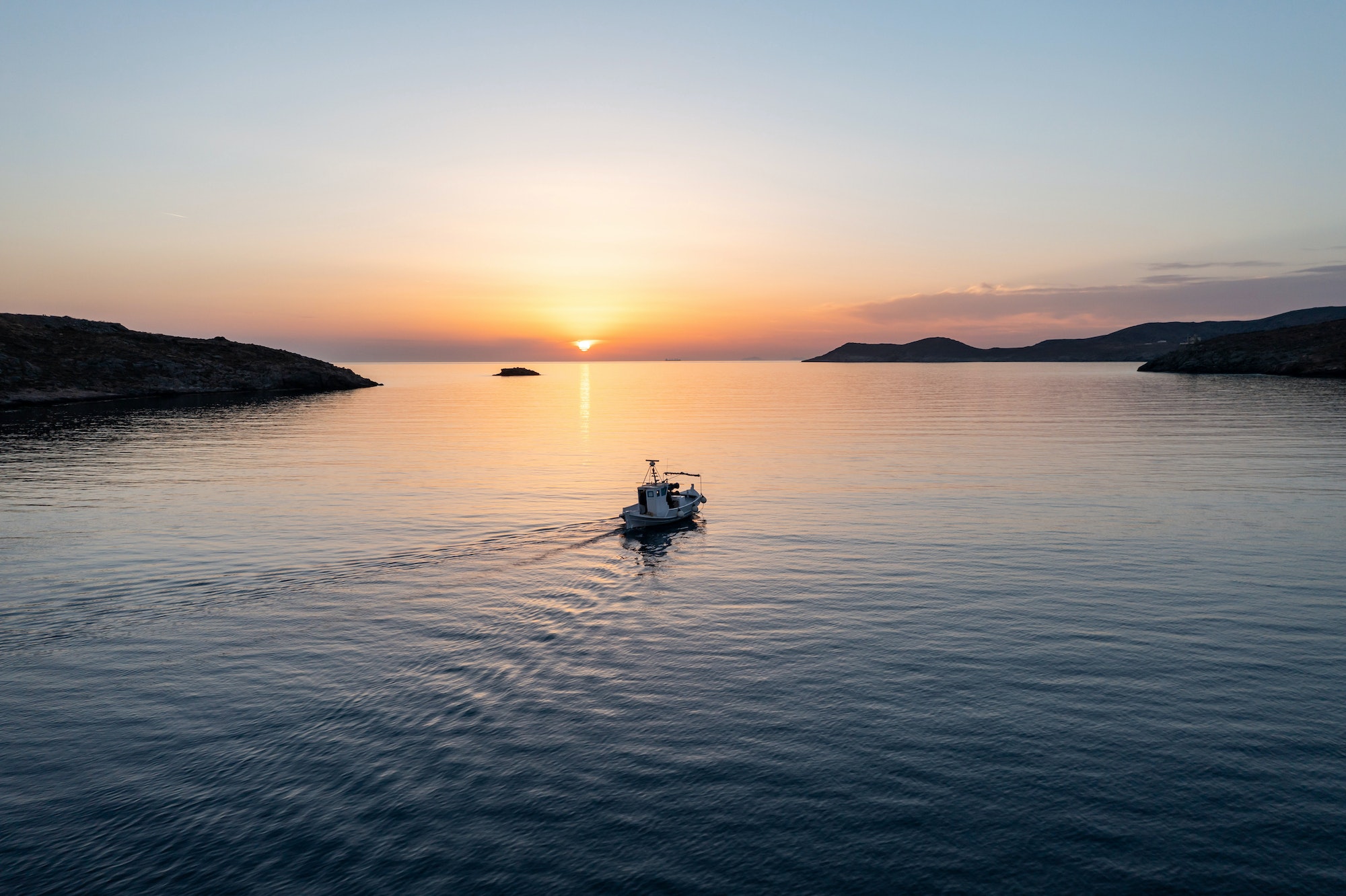
Best locations for fishing on Lake Erie
Put-in-Bay, Ohio
Put-in-Bay is the perfect place for a fishing vacation on Lake Erie. The area is known as the “Walleye Capital of the World” with its abundance of walleye and other excellent lake fish, including smallmouth bass, yellow perch, and catfish. Visitors can choose between Put-in-Bay Charter Fishing, Char-tom Sport Fishing Charters, or Captain Park’s Lake Erie Charters for their fishing experience. All charter services follow guides and regulations from the U.S. Coast Guard and the Ohio Department of Natural Resources. Boats and fishing gear can be rented from Wharfside near the Boardwalk, and more in-depth fishing reports can be provided. Boat ramps are available at South Bass Island State Park and downtown Put-in-Bay and lodging recommendations include the Island Club or Bird’s Nest Resort. The best time to fish is in the early spring for perch, walleye, and catfish during the summer.
Lorain, Ohio
Lorain is an ideal location for fishing on Lake Erie. Situated on the lake’s western basin, it offers easy access to various fishing opportunities. The shallow basin has depths averaging around 60 feet, making it an ideal spot for walleye, yellow perch, smallmouth bass, steelhead trout, and white bass. The nearby break walls, harbors, and marinas provide excellent spots for anglers looking to catch these species. The nearby Lorain and Lakefront State Park also provide great spots for fishing year-round. The nearby Ruggles Reef and Cleveland artificial reefs offer more fishing opportunities for deep sea fishing. Furthermore, the lake’s eastern/New York line provides a much deeper bottom, ideal for offshore trolling in the summer months. All of these features make Lorain an ideal spot for anglers looking to take advantage of Lake Erie’s fishing opportunities.
Dunkirk, New York
The natural features and attractions of Dunkirk, New York, are ideal for fishing trips. Dunkirk is home to some of the best fishing spots in the area. The Lake Erie shoreline and the Dunkirk Harbor provide plenty of spots for anglers to cast their lines. Buffalo, Chadakoin, and Cassadaga Rivers’ river mouths offer great fishing locations. Dunkirk is also home to the Walleye Fishing Charters, which offer expertly guided trips for walleye and other species. Other fishing options include the Bay’s Edge Experience in nearby Fairport Harbor, Ohio. The Bay’s Edge Experience provides guided trips for Salmon, Steelhead, and Walleye. So, if you’re looking for a great fishing spot in Dunkirk, New York, you won’t be disappointed.
Erie, Pennsylvania
Erie, Pennsylvania, is an excellent spot for fishing in Lake Erie. The lake is relatively shallow, which causes it to warm quickly during the spring and summer months, resulting in prime-time fishing conditions. Anglers have been known to troll the waters for walleye, drift for crappie, specks, and bass offshore, and cast their lines from the shore for walleye, perch, and panfish. There are also plenty of opportunities for night fishing in the spring, and trout fishing is excellent near tributaries. Fishing regulations are in place to protect the lake’s plentiful game fish species, such as walleye, bass, yellow perch, bluegill, crappie, and steelhead.
Buffalo, New York
Buffalo, New York, is an excellent spot for fishing at lake Erie, with plenty of great spots. The prime spots for fishing in the city include the Buffalo Harbor, the Buffalo River, and Lake Erie. Prime Trout species like Lake, Steelhead, Brown Trout, and Salmon can be found in the waters around Buffalo. You can also find Walleye, Bass, and Perch here.
When it comes to charters, West Sister Charter Fleet offers the best walleye charters. Their fifteen elite fishermen have a lifetime of experience and absolutely love what they do. They fish Lake Erie every day during the fishing season, and you can trust their expertise to make your trip a success.

Types of fish in Lake Erie and how to catch them
Walleye
A walleye is a freshwater game fish native to Lake Erie and other North American lakes. It is a member of the Percidae, or perch family, and is one of the most popular recreational fish for anglers. Walleyes can be identified by their characteristic golden-brown color, large eyes, and slender bodies. They are typically found in deeper, cooler waters and are known to school up in large numbers. Walleyes are highly sought after for their delicious flavor and fighting capabilities.
In Lake Erie, walleye can be found in two main populations. The resident population remains in the lake year-round and can usually be found closer to shore. Additionally, a migrating population moves into the western basin of the lake during the winter and spring.
Walleyes can be targeted using various methods, including trolling, anchoring, and drifting. During the summer months, they can often be found in deeper offshore waters and will often congregate in schools when feeding. Fishing for walleye is also popular during the spring and at night when they are more likely to be nearer the surface.

Smallmouth Bass
The smallmouth bass is a species of fish that can be found in Lake Erie. Smallmouth bass is known for their ferocity and is popular with anglers due to the challenge they present when catching them. These basses are one of the most frequently caught fish species in Lake Erie and make up about 25% of all fishing trips for the entire year.
Smallmouth bass in Lake Erie generally range in size from 2 to 4 pounds, but with the right technique, it’s possible to land a five or 6-pounder. They are also known to be acrobatic when hooked, often breaking the water’s surface and jumping. Female smallmouth bass tends to be larger than males of the same age and reach maturity by age three to four.
The best way to attract smallmouth bass in Lake Erie is to drift fish with live bait, such as minnows, in 20-40 feet deep areas. Good hiding spots for them to hide are underwater structures, ledges, and rocks. The best time to pursue smallies is mid-June to mid-August, but there is an excellent opportunity for anglers to catch them year-round. Additionally, anglers should look for bottom structures such as rocky rubble, rubble piles, humps, holes, drop-offs, and ledges when fishing for smallmouth bass.
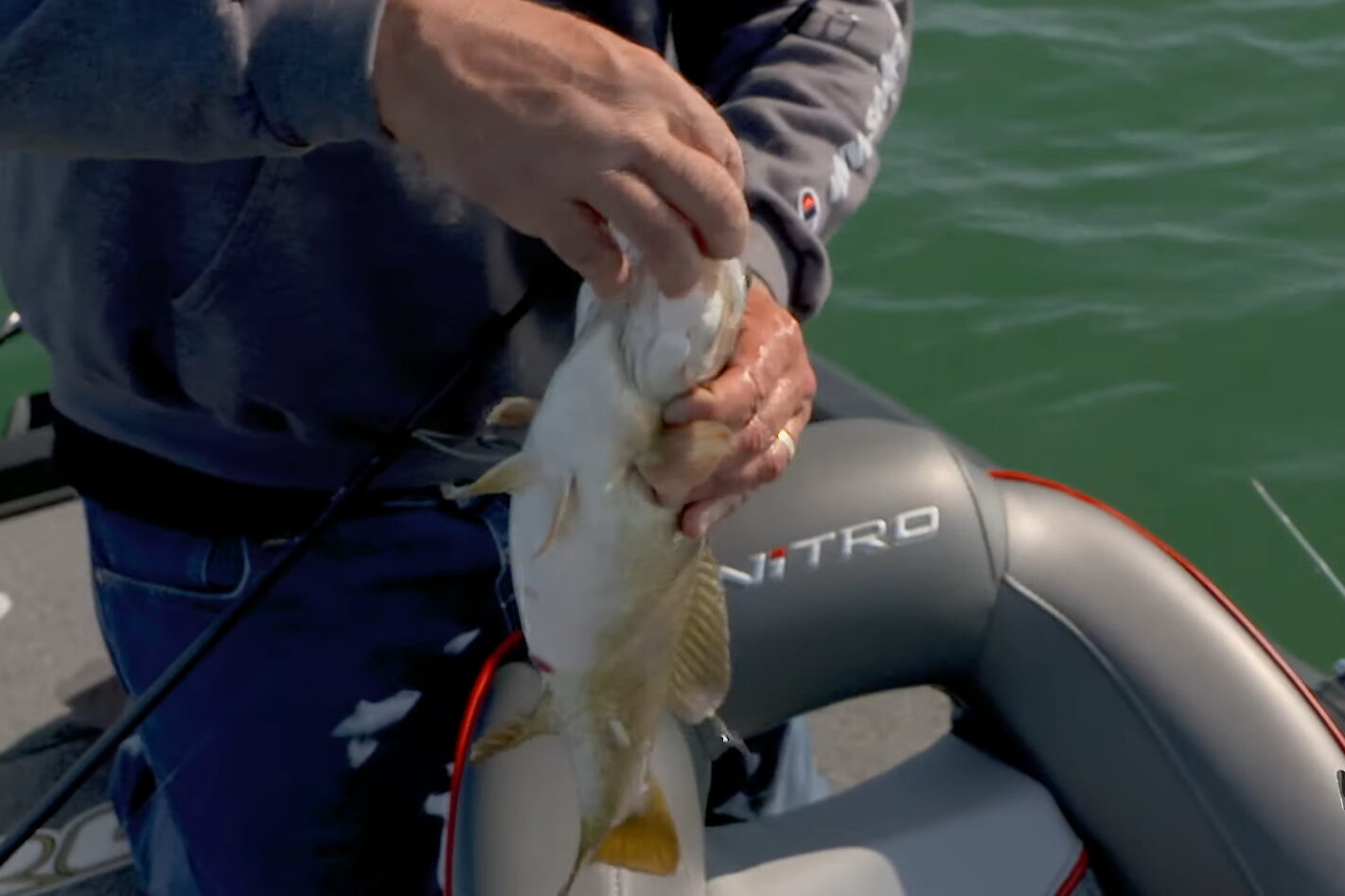
Steelhead Trout
A steelhead trout is a species of fish in the Salmonidae family. It is native to the Pacific coasts of North America and Asia and is an anadromous species, meaning it migrates to freshwater rivers and streams to spawn and then returns to the ocean. Steelhead trout can be found in Lake Erie, particularly in the eastern basin around the mountain area, and in the fall, they also congregate near the mouths of the creeks. Steelheads are considered to be aggressive fighters, and when fishing for them, it is best to use trolling methods with downriggers or divers. Spoons, stick baits, and other lures are the most popular for catching steelhead.
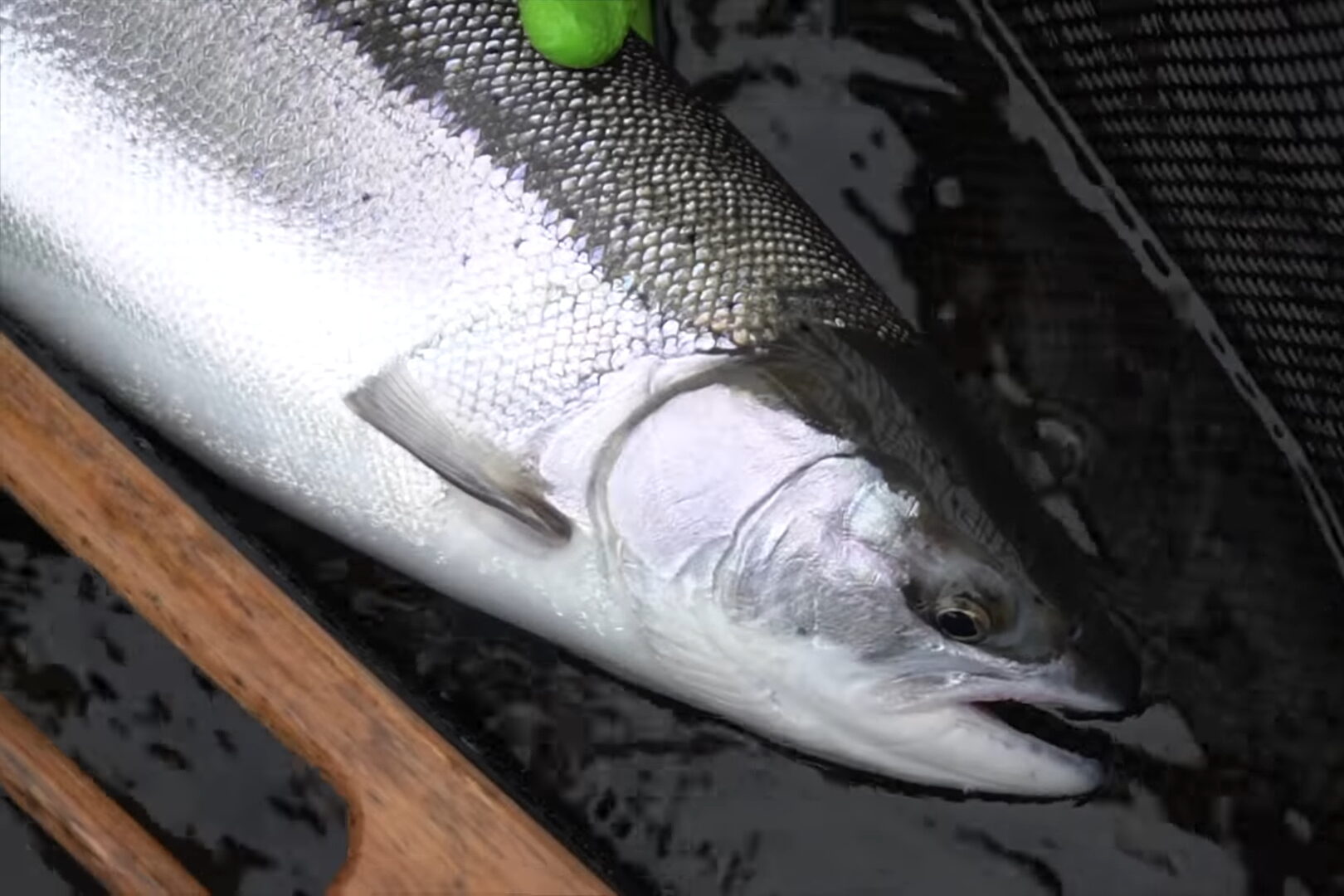
Catfish
Catfish is a common species found in Lake Erie and can reach a maximum size of up to 50 inches. They have a large, flat head and long, scaleless body with barbels or whiskers that protrude from their mouth. Catfish primarily feed on aquatic insects, crayfish, and other fish. They are bottom-dwelling fish and prefer to hide in the mud or sand along the lake bottom. Catfish are ambush predators and prey on their food by lurking in the lake bottom and ambushing their unsuspecting prey. During the day, catfish stay relatively inactive. However, at night they become more active and forage for food. Catfish spawn in the spring, typically in shallow and weedy areas, and can lay up to 100,000 eggs.
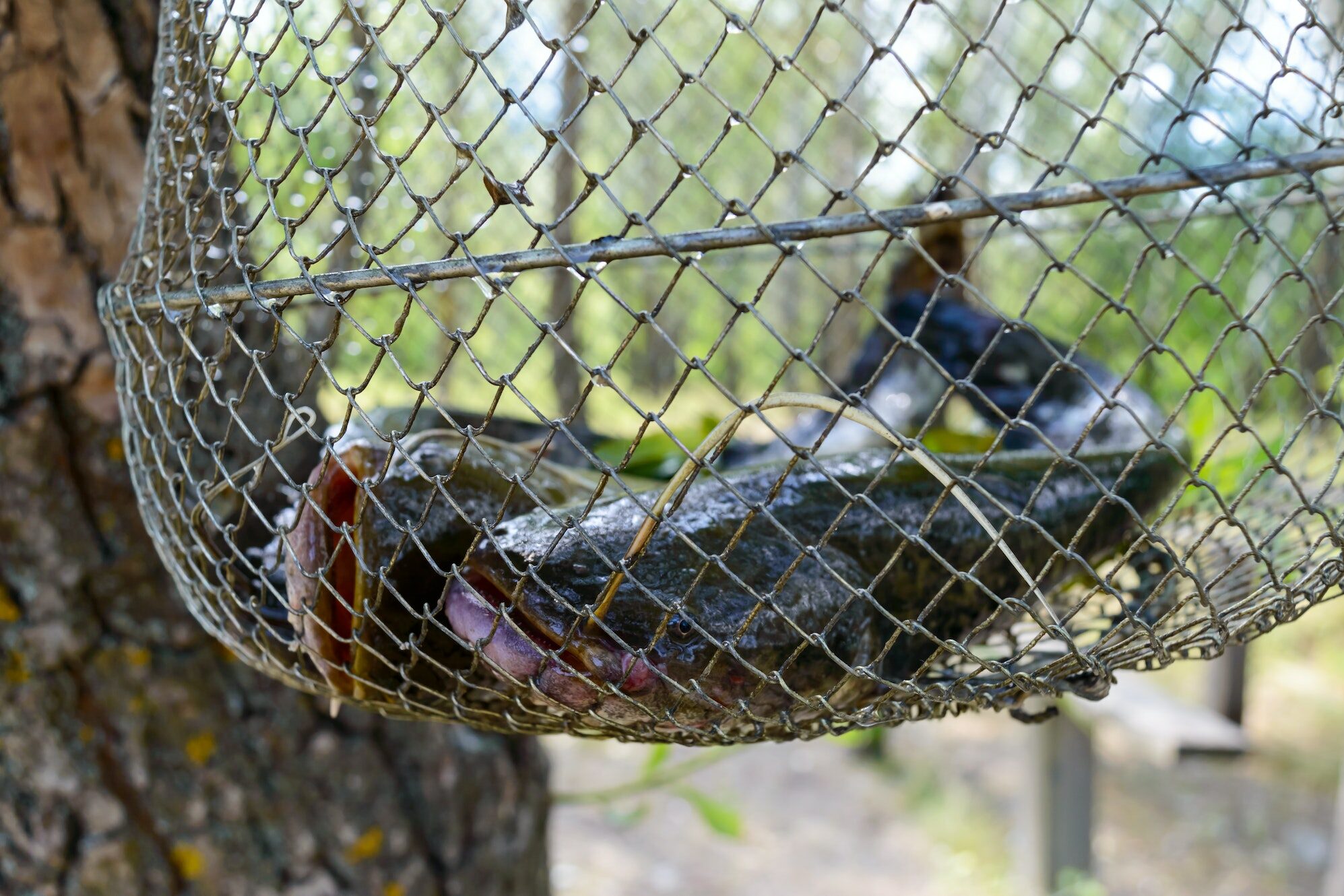
Yellow Perch
Yellow perch are a golden-bronze color with yellowish-green sides and a light-colored belly. They can be caught in Lake Erie by anchoring and drifting with live minnows. Fishing is best in the summer and early fall when they are most active. The most popular spots for perch fishing are in the deeper waters, such as off the Peninsula lighthouse in 40 to 50 feet of water. Winter fishing success entails either targeting schools in deep water from boats or through the ice.
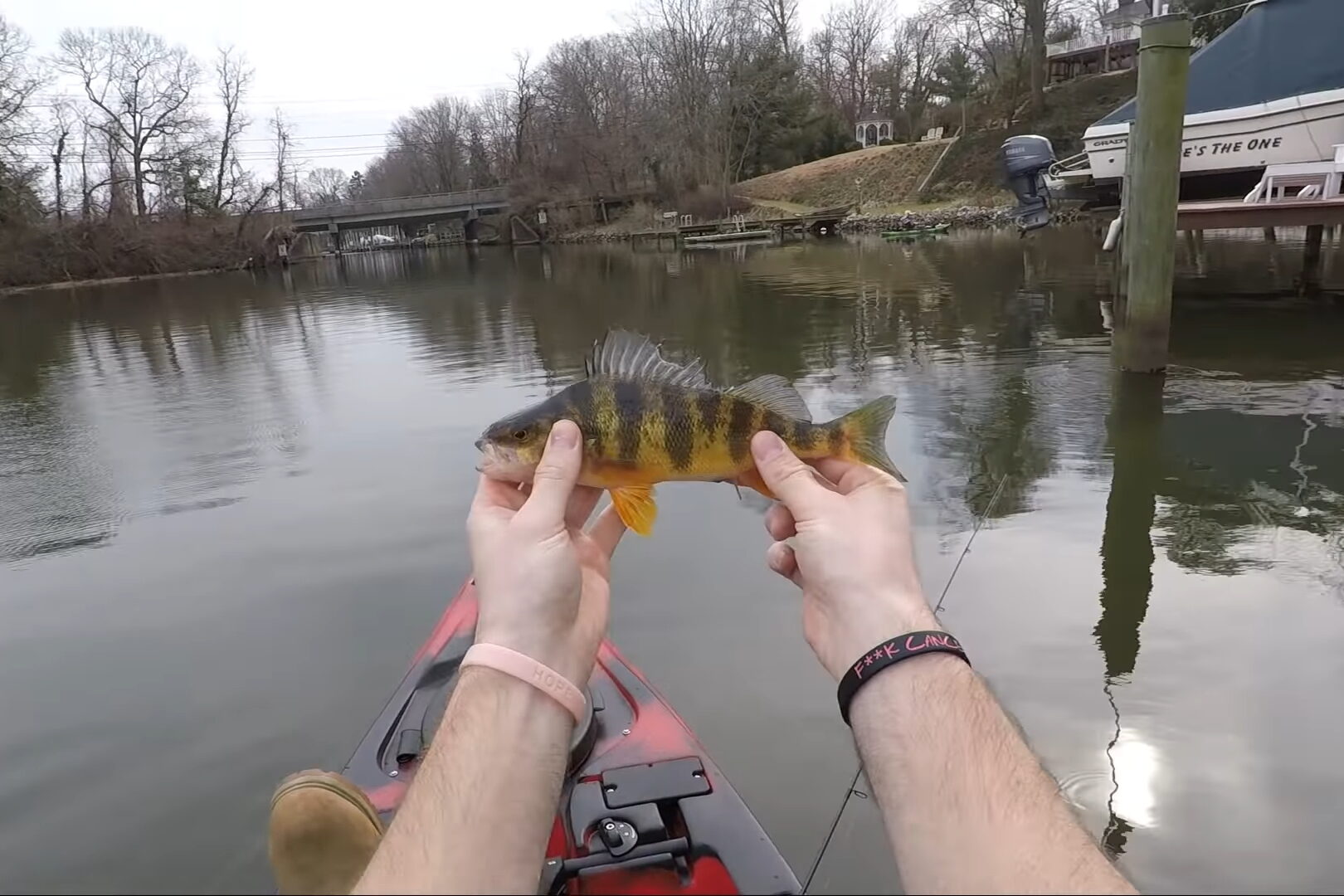
Salmon
The main difference between Salmon and other types of fish in Lake Erie is their temperature sensitivity. Salmon are cold-water fish most active in water temperatures around 55 degrees Fahrenheit. Other species, like largemouth bass, rainbow trout, and yellow perch, are far more tolerant of warmer temperatures and can be found in a variety of depths and habitats. Salmon also tend to congregate in specific areas of the lake, such as the mouths of rivers and creeks, during their spawning runs, while other species are more widely distributed. Salmon are also better fighters and more popular table fare than other species in the lake.

Tips for catching big fish on Lake Erie
Know Your Species
Identifying the species of fish in Lake Erie involves paying attention to the critical characteristics of the fish. Before you start fishing, make sure to understand the local regulations regarding fishing and to get the appropriate permits.
First, to identify the fish species in Lake Erie, observe the fish’s color and body shape. Largemouth bass, for example, is dark green and typically has a large mouth. Rainbow trout are silver with a pink band along their sides, and yellow perch are typically golden or yellow.
Next, take note of the size and environment of the fish. Largemouth bass is usually 10 to 20 inches long, while rainbow trout are nine to 15 inches long. Perch usually range between six and 11 inches in length. Additionally, bass usually lives in warm, shallow waters, while trout prefer cold, deep waters, and perch tend to live in shallow, weedy areas.
Finally, use the photos of each species in the reference material to compare the fish you’re observing to the pictures. This will help you identify the species of fish in Lake Erie accurately.
Use the right equipment
Catching big ones on Lake Erie requires more than just the right bait. To ensure a successful fishing experience, you’ll need the right equipment. Here is a list of essential gear for fishing on Lake Erie:
- A 16 feet or longer boat with a deep V-hull, preferably at least 50 horsepower, a trolling plate attachment for slower speeds, and a second battery for added protection in case the main motor stops working.
- A marine radio for communicating with other boaters and the Coast Guard station inside the Presque Isle Bay channel.
- A fish/depth finder to locate fish and structures in the lake.
- A navigational aid such as a Loran or GPS unit for finding your way back to port or your fishing hot spot.
- First aid supplies, coolers, fishing gear, landing nets, and life jackets.
- A newly constructed bait and tackle shop filled with all the necessary items for the beginner or experienced angler alike.
- If ice fishing, a licensed Ohio Lake Erie ice fishing guide.
With the right equipment, you’ll be ready to hit the lake and catch those big ones!
Use the Right Bait or Lure
When fishing on Lake Erie, you want to choose the best baits and lures in order to catch the biggest fish possible. Drift fishing charters can be successful using a nightcrawler and with lures such as bottom bouncers, weight-forward spinners, jigs, weapons, or other presentations. Precision trolling is the most efficient method for trolling charters, and you can use lures such as spoons. In May, post-spawn fish are still aggressive, and females are hungry; therefore, most anglers use bottom bouncers, worm harnesses, and trolling spoons. Additionally, flatlining is also successful with deep diving lures that can reach depths of 15 feet or more, and planer boards can be used to fish away from the noise and disturbance of the boat. With the right lures, you can have a successful fishing experience on Lake Erie and catch the biggest fish possible.
Pay attention to the water temperature
When fishing on Lake Erie, it is essential to pay attention to water temperature as it can affect the behavior of the fish. The fish can be found at different depths depending on the time of year, and water temperatures can significantly affect where the fish will be located. Warmer water temperatures can cause fish to move to shallower areas, while cooler temperatures can cause them to move to deeper areas. In addition, fish become more active in warmer waters, so it is important to know the lake’s temperature to maximize your chances of catching fish. Knowing the lake’s temperature can also help you select the right bait and tackle to use, as well as the best fishing methods.
Be patient
Patience is important when fishing because of the seasonal variations in fishing activity. In the spring, post-spawn fish are more aggressive, but as the summer progresses, catch rates can start to slow down as fish move offshore to cooler waters. In the fall, nearshore areas can be more productive as fish return to the nearshore areas for cooler temperatures. Additionally, the weather on the lake can turn suddenly, so having patience and knowing when to change tactics or locations can help ensure a successful fishing outing.

FAQ
What is the best way to catch fish in Lake Erie?
The best way to catch fish in Lake Erie is to use a combination of techniques depending on the weather conditions, temperature, and water clarity. When the water is still cold in the early spring months, hair jigs will be effective for targeting spawning walleye. As the water begins to warm, anglers can transition to casting worm harnesses or trolling. During the summer months, when the walleye move to deeper offshore waters, slow trolling around two miles per hour is recommended for the best results. It’s also possible to fish from the shore, beaches, and piers to target walleye, perch, and panfish when the light is low at dawn and sunset. Lastly, near tributaries, it’s possible to find good trout fishing. For an even better experience, hire a professional to help you navigate the waters of Lake Erie.
What is the best time of year for fishing in Lake Erie?
The best time of year for fishing in Lake Erie is during the summer months, from July through September, when walleye can be found offshore in the trenches and at the mountain. July is the best month for limited walleye catches, while September and October are the prime months for trolling for steelhead and Salmon near the mouths of tributaries. Steelhead and lake trout can be found in the middle to late summer in the deep waters of the mountain.
What are the regulations for fishing in Lake Erie?
If you’re planning on fishing in Lake Erie, it’s important to be aware of the regulations in place. In Ohio, you’ll need to obtain a valid fishing license and a Trout Stamp if you plan on catching Trout and Salmon. If you plan on fishing in Canadian waters, you’ll need to bring your passport, a Canadian Outdoors Card, and the appropriate fishing license. Additionally, the Division of Wildlife recommends contacting a licensed Ohio Lake Erie ice fishing guide if you plan on ice fishing.
What is the best charter for fishing in Lake Erie?
When it comes to fishing in Lake Erie, finding the best charter for your needs is critical.
West Sister Charter Fleet offers some of the finest walleye charters in Lake Erie, with 15 experienced captains who have been fishing in the lake for over 30 years.
Captain Park’s Lake Erie Charters provide an excellent experience for the whole family with a comfortable and fully modernized boat, the “Megacraft.”
Meanwhile, ‘Eye-Catcher Charters Lake Erie Fishing Charters offers private fishing charters for up to 6 passengers, and an average of 4,000 walleyes are captured each season on their boat alone. The boat is U.S. Coast Guard inspected, and the crew is U.S. Coast Guard licensed, so you can be sure that you’re in safe, experienced hands.
Furthermore, ‘Eye-Catcher Charters Lake Erie Fishing Charters has a 100% 5-Star rating, which is indicative of the quality of experience they provide.
What is the best bait to use for fishing in Lake Erie?
The best bait to use for fishing in Lake Erie depends on what species of fish you’re looking to target. For walleye, the best approach is trolling with slow speeds (2 miles per hour) during summer. The best way to get their attention is to use planer boards, which are effective for both day and night fishing. In the spring, walleye tend to move closer to the surface, so it’s best to fish when the light is low at night. Drifting fishing with spinnerbaits with bottom bouncers or trolling crankbaits can be very effective for Yellow Perch and other panfish. For trout, it’s best to fish near tributaries. If you’re looking to target perch, then using worm harnesses or deep diving lures is your best bet.
Are there any fishing spots to avoid in Lake Erie?
Although Lake Erie offers plenty of excellent fishing spots, some areas should be avoided. The ice dunes on Lake Erie can be very dangerous, so it is always recommended to stay away from them. Fishing in the winter should not be done directly on Lake Erie but instead in Presque Isle Bay, where the water is more stable and the risk of falling through is much lower.
If you fish in open water in the winter, find areas close to the tributaries, as the warm water generally brings more fish. When fishing from the shore or piers on Lake Erie, avoid rocks and reefs, as well as areas with high wave activity, as these can be dangerous and make it challenging to keep your catch.

